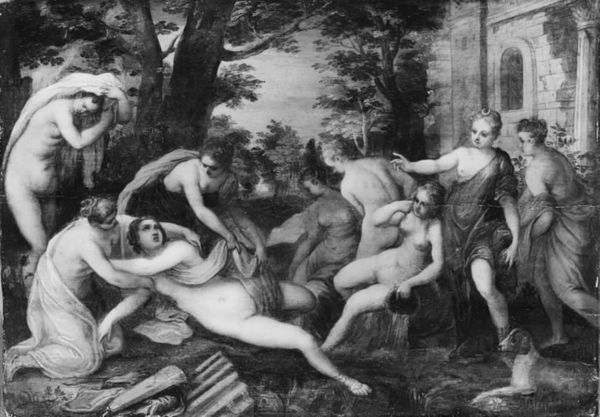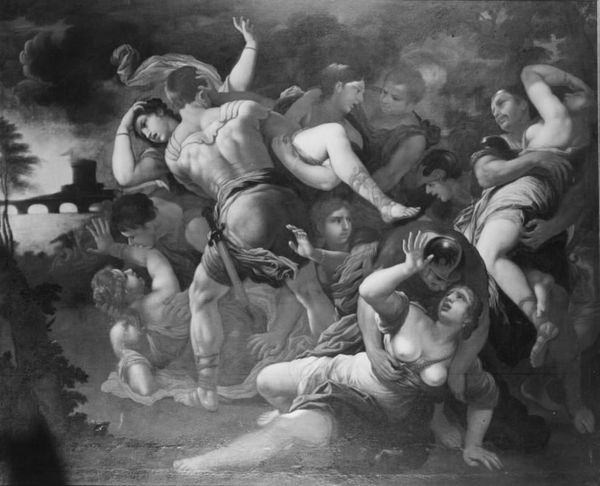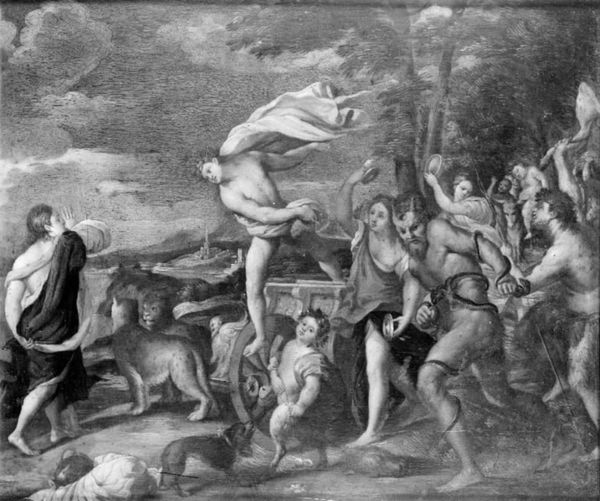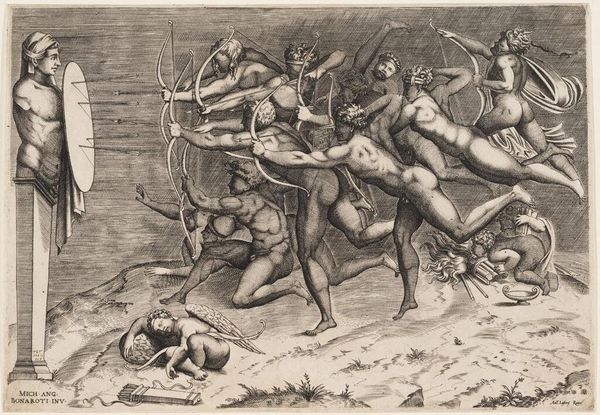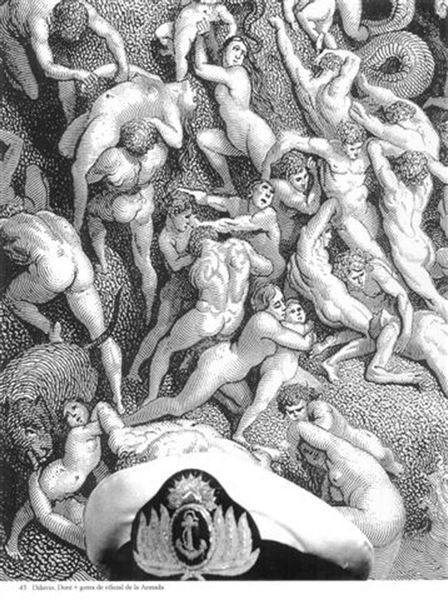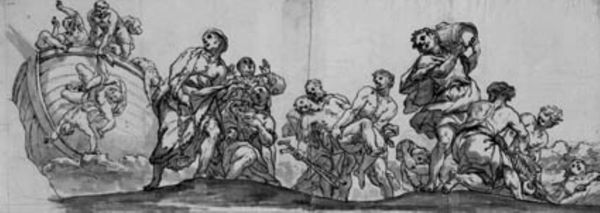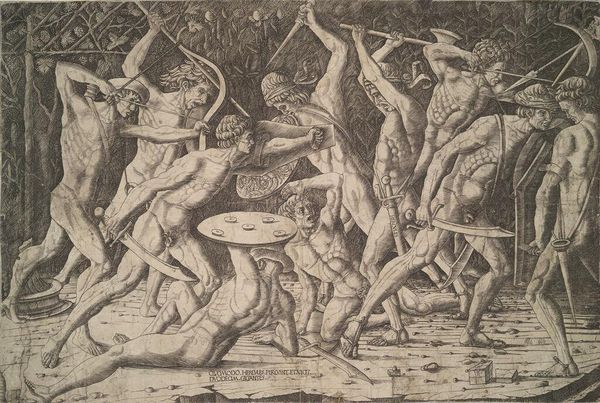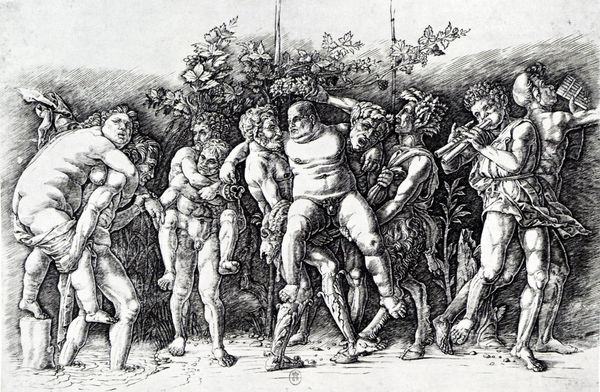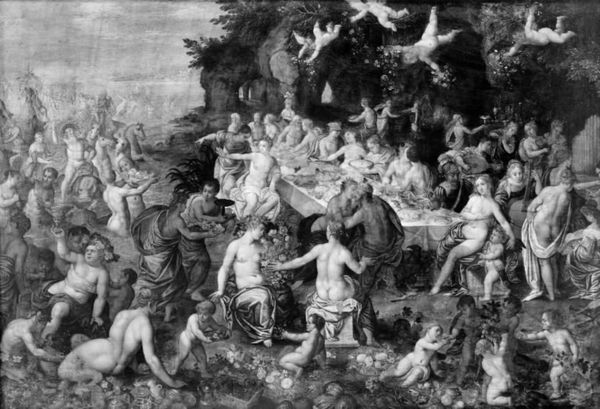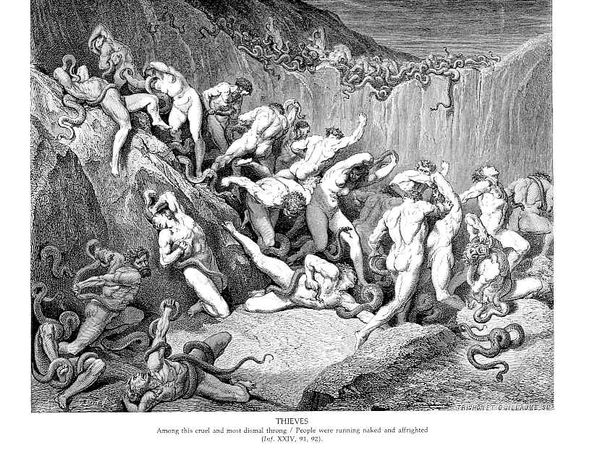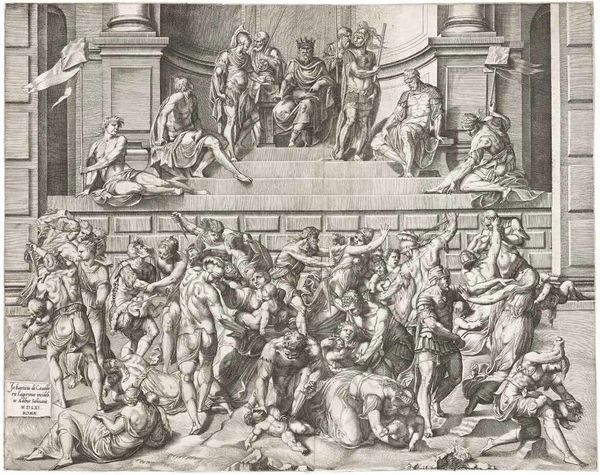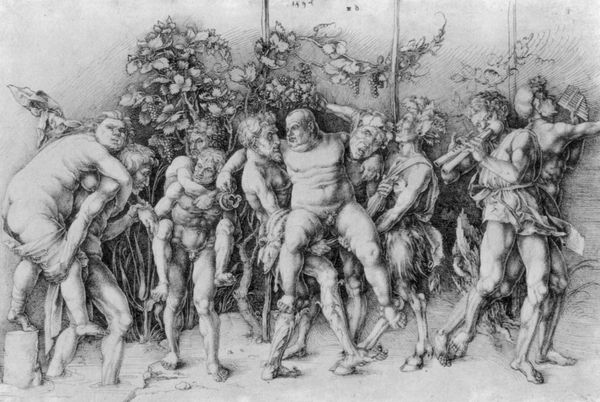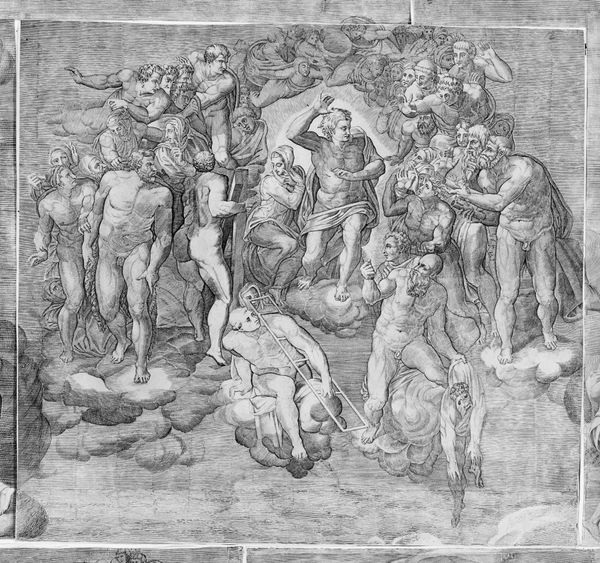
Dimensions: 77 x 130 cm
Copyright: Public domain
Editor: So, here we have Aristotele da Sangallo’s copy of Michelangelo’s “Battle of Cascina,” created around 1506 using charcoal. It’s… intense. The sheer number of figures and the dramatic poses make it feel incredibly chaotic, yet controlled. As a student, I'm always curious about how we contextualize these scenes. What does it all mean? Curator: Well, consider the historical moment. Florence was striving to assert its republican values through art. Michelangelo’s original cartoon, even though never realized as a fresco, served as a powerful statement of civic pride, of male strength. The male nude was a signifier of that strength, directly connecting to its antique classical precedents and a culture of male dominance, and competition with the Signoria government. What do you make of the choice to depict the battle in this particular way? Editor: I guess the emphasis on the male nude almost overshadows the battle itself? Like, are we supposed to admire their physique even as they’re fighting? It’s confusing. Curator: Precisely! This tension is central to understanding the work. Michelangelo used the male form to convey not just physical strength, but also moral virtue and civic responsibility... qualities the Florentine Republic aimed to embody and project. In copying this work, how did Aristotele reflect or react against this notion of civic male virtue? Editor: So the choice to focus on musculature and the nude form really ties into the sociopolitical landscape of Renaissance Florence? I didn’t think about it that way, to be honest. This makes me see this "copy" in a different way. It's part of that cultural conversation. Curator: Indeed. This piece highlights how art engages in shaping, reinforcing, or even challenging those dominant societal values and behaviors. The fact that it’s a copy gives the work another interpretive layer: why copy a politically charged artwork in the first place? It speaks to its power in Florence’s consciousness, and is another way art became a marker of political positionality. Editor: Wow, I didn’t think there was so much going on under the surface. I’ll definitely remember that art reflects the politics and society that produces it. Thanks for sharing these insights.
Comments
No comments
Be the first to comment and join the conversation on the ultimate creative platform.
